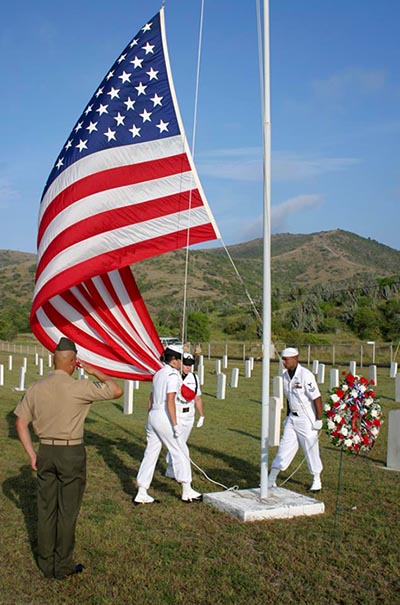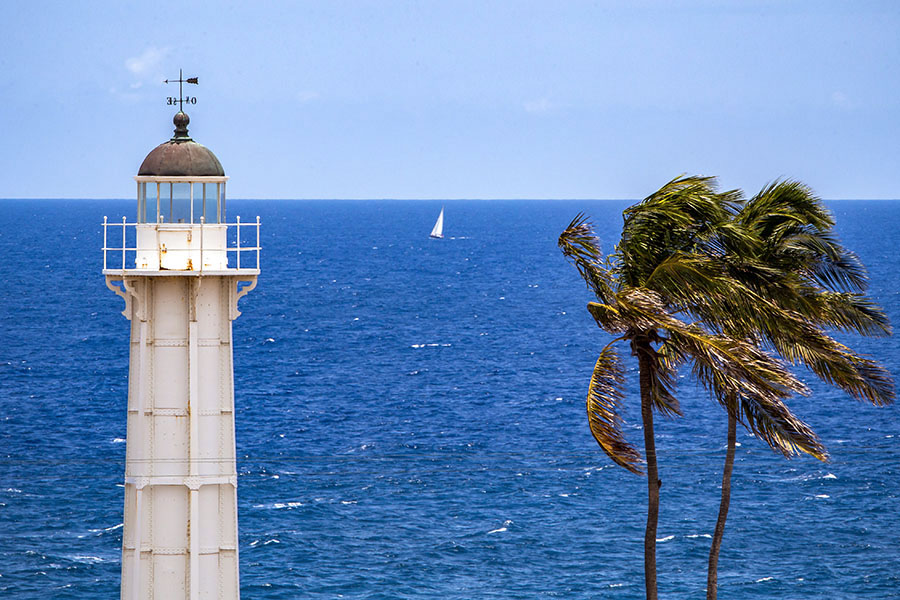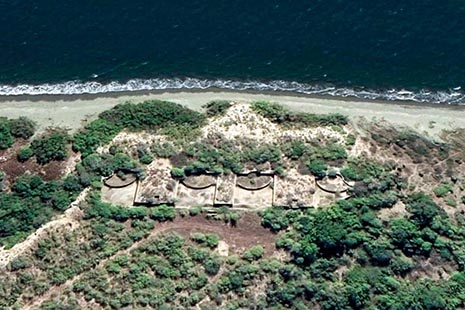Exploring GTMO
Cuzco Well Cemetery
Cuzco Well Cemetery is the final resting place for 330 people who have died in Guantanamo Bay. It's named for the nearby well, a site of one of the first battles of the Spanish American War in 1898.
The cemetery was established in 1944 when the base commander ordered the consolidation of seven other cemeteries around NSGB.
The cemetery is open for visitors just once a year on Memorial Day.
Otherwise, permission to visit the cemetery can be obtained by contacting the US Naval Hospital Guantanamo Bay. Visitors must be escorted to the cemetery by the Naval Station Ordinance Department.

Lighthouse Museum
The exact date is unknown but the lighthouse was likely built around 1900.
The lighthouse was first described in a 1901 report by the Captain of the Port of Havana after touring lighthouses of Cuba.
The Captain of the Port wrote: “Guantanamo light-house is situated on Punta de Barlovento, the western point of the entrance, and exhibits from a tower 23.1 meters above the sea...visible 14 miles and is in good condition. The tower is of iron, cylindrical in shape, is new and in perfect condition."
The lighthouse was a vital navigation aid for decades, especially during World War II when it served as a beacon for naval and commercial shipping under the threat of German U-boats in the Caribbean.
The lighthouse was decommissioned in 1955 after a new tower light was placed on top of Beacon Hill.
The buildings were turned into the Lighthouse Museum in 1995.

Fort Conde / Hicacal Beach
Fort Conde is located on Hicacal Beach overlooking NSGB.
It was designed by the US Army in 1906 to have 6-inch disappearing carriage guns. Within a year of construction, four gun mounts and two fire control stations were built along with a power plant, storehouse, quarters, mess hall, and a wharf.
Due to lack of funding, the guns were never delivered to GTMO and the Army left the fort in 1908.
Fort Conde is accessible only by boat. In order to visit, boats are required to anchor at least 100 yards offshore. After swimming to shore, follow the path up the southeast side.

Hospital Cay
An old coaling station, Hospital Cay is a popular destination for boating, cook-outs, and overnight camping.
In 1741, the British established a hospital on the island during a war with the Spanish. Used primarily to isolate and treat sailors stricken with yellow fever, the British spent eight months in Guantanamo Bay.
A hundred years later, the British warship HMS Buzzard anchored near the island and once again used the island to isolate a dozen crew members suffering from yellow fever. All survived except one who was buried on the south end of the island.
The island was later used as a coaling station.
Northeast Gate
[Content]

